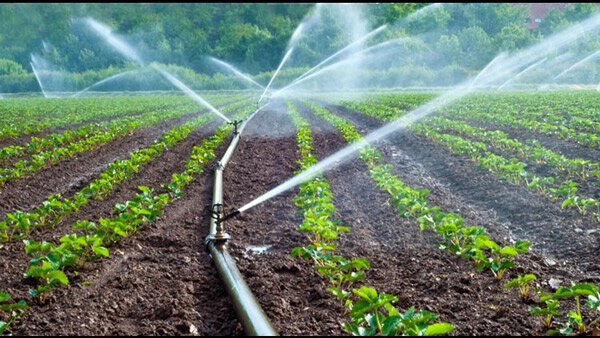Optimal cultivation key to preserve water resources

TEHRAN – Iran has been grappling with water stress since 2006 and the situation is forecast to be exacerbated by the next 15 years while reforming the irrigation method from traditional to modern will reduce water consumption and waste at least by half.
Last week, President Ebrahim Raisi referred to the issue of water scarcity across the country, calling all sectors to find a wise and long-term solution to the issue.
Expert studies show that between 70 to 90 percent of the country's water resources is used in the agricultural sector annually, according to the National Agricultural Research Centre.
Part of this huge amount of water consumption is related to the improper cultivation pattern that has been going on for years, regardless of the country's capacities and priorities. But the other part is concerned with the traditional method of irrigation, which is centuries old and still runs in many parts of the country, a method that wastes a lot of water and also causes floods and landslides.
Modern irrigation methods have different types, including surface irrigation and pressurized irrigation.
Some 2.4 million hectares of agricultural land are equipped with pressurized irrigation systems, but still a long way from 9 million hectares. Surface irrigation is where water is applied and distributed over the soil surface by gravity. It is by far the most common form of irrigation throughout the world and has been practiced in many areas virtually unchanged for thousands of years.
In pressurized irrigation systems, water is pressurized and precisely applied to the plants under pressure through a system of pipes. Pressurized irrigation systems, as opposed to surface irrigation systems, are more effective in the application of irrigation water to crops.
New irrigation methods (especially drip irrigation) have been introduced in the world since 1950 and have entered the Iranian agricultural industry since 1969.
Currently, 2.4 million hectares of agricultural land are equipped with pressurized irrigation systems, but we are still a long way from reaching the figure of 9 million hectares.
Out of 164 hectares of agricultural land, about 20 hectares are cultivated.
Since the agricultural sector is the largest and most important water consumer in Iran, any action is necessary to stop the “80 percent loss of water resources” which is mainly caused by the lack of use of advanced irrigation technologies.
On the other hand, one of the problems for farmers in changing the irrigation method is the high cost of its equipment, which apparently the government was supposed to have an 85 percent share in the financing, but so far this has not been achieved.
It seems that the national water council, the Center for Strategic Studies, the Vice Presidency for Science and Technology, the ministries of Energy and Agriculture, with the cooperation of other sectors, can change irrigation methods in less than two years.
In particular, they should address the issue of reforming the irrigation method so that the result will be huge savings in annual water consumption and Iran's agriculture and environment will be partially out of the crisis.
Water resources declining
Renewable water resources have decreased by 30 percent over the last four decades, while Iran’s population has increased by about 2.5 times, Qasem Taqizadeh, deputy minister of energy, has said.
A recent report by Nature Scientific Journal on Iran’s water crisis indicates that from 2002 to 2015, over 74 billion cubic meters have been extracted from aquifers, which is unprecedented and its revival takes thousands of years along with urgent action.
Three Iranian scientists studied 30 basins in the country and realized that the rate of aquifer depletion over a 14-year period has been about 74 billion cubic meters, which is recently published in Nature Scientific Journal.
Also, over-harvesting in 77 percent of Iran has led to more land subsidence and soil salinity. Research and statistics show that the average overdraft from the country's aquifers was about 5.2 billion cubic meters per year.
Mohammad Darvish, head of the environment group in the UNESCO Chair on Social Health that the situation of groundwater resources is worrisome.
The report notes that Iran’s water consumption has increased due to a significant increase in legal and illegal wells, the expansion of agricultural land, and increasing livelihood dependence on water and soil resources in agriculture, livestock, and poultry, which are mainly caused by human factors, Darvish noted.
The statistic is unprecedented, as the total reservoirs of all dams in the country have a capacity of about 50 billion cubic meters; In other words, in the last 14 years, 22 billion cubic meters more than the capacity of all dams have been extracted from the country's underground sources, he explained.
FB/MG
Leave a Comment